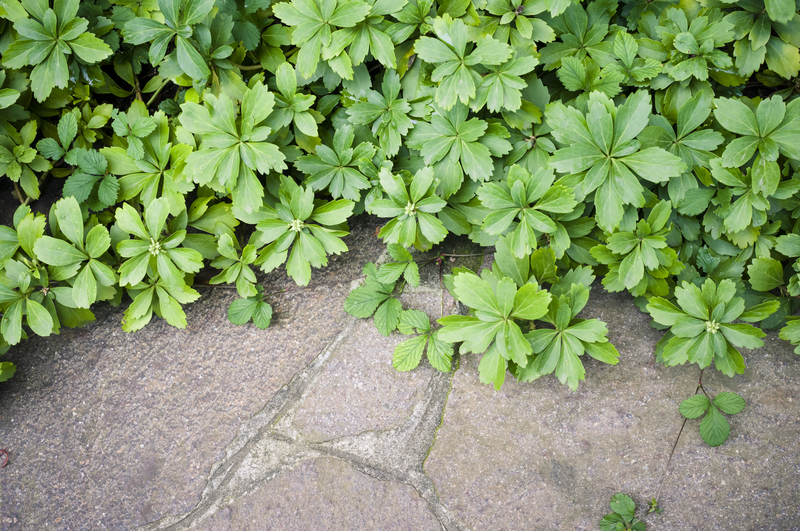Winterizing Plants: Strategies for a Cold-Resilient Garden
Posted on 25/09/2025
Winterizing Plants: Strategies for a Cold-Resilient Garden
As the temperatures drop and the days shorten, gardeners everywhere brace themselves and their gardens for the challenges winter brings. Winterizing plants is essential for maintaining a vibrant and healthy garden year-round. In this comprehensive guide, we'll uncover effective strategies and methods to create a cold-resilient garden, ensuring your plants are protected and ready to thrive come spring.
Why Winterizing Your Garden is Essential
Many home gardeners underestimate the impact harsh winter conditions can have on their beloved plants. Sudden frosts, freezing winds, and heavy snow can damage roots, stems, and even lead to plant death. Preparing your garden for winter is about more than just survival; it's about ensuring vigorous growth in the next growing season and preventing the loss of your investment in plants, time, and effort.
- Frost damage can kill sensitive perennials and shrubs.
- Repeated freeze-thaw cycles can heave soil and expose roots.
- Heavy snow and ice may break branches or crush delicate plants.
- Desiccation from cold winds can dry out plant tissues.

Understanding Your Garden's Climate
Winterizing perennials and shrubs starts with a good grasp of your local climate conditions. The USDA Plant Hardiness Zone Map is a great resource to help you determine which plants are most vulnerable and need the most attention. Knowing your garden's exposure to wind, sun, and moisture helps tailor your winter protection strategies.
Microclimates in Your Garden
Within your home landscape, various microclimates exist:
- South-facing walls reflect warmth and shield from wind.
- Low-lying areas can collect cold air and frost.
- Windbreaks, such as hedges or fences, can reduce wind chill effects.
Identify which plants are in the most vulnerable spots and plan accordingly.
Steps to Prepare Your Plants for Winter
1. Assess Your Plant List
Start by assessing all your garden plants. Make a list of:
- Tender annuals and perennials that will not survive frost
- Trees and shrubs that need special attention (e.g., newly planted, borderline hardy, or container-grown plants)
- Vegetable beds and fruiting plants with late-season growth
2. Clean Up and Remove Debris
Removing old leaves and diseased plant material helps prevent pests and fungal diseases from overwintering in your garden. However, some perennial foliage and healthy leaves left on the ground can actually insulate roots and provide habitat for beneficial insects.
- Remove dead annuals and compost what's disease-free
- Cut back perennials only if necessary (some can be left for winter interest and wildlife shelter)
- Pull up weeds before the ground freezes
3. Mulching: The Winter Blanket
Mulching is one of the best strategies for cold-resistant gardens. Applying a generous layer of mulch after the ground is cold helps keep soil temperatures consistent, preventing freeze-thaw cycles that damage roots.
- Use materials like straw, shredded bark, leaves, or compost.
- Apply a 2-4 inch layer around the root zone but avoid piling it against stems or trunks.
- Mulch insulates and helps retain moisture.
Tips for Winter-Proofing Common Garden Plants
Winterizing Perennials
Most herbaceous perennials benefit from a little preparation. Cut back stems after they die down, and apply mulch to protect root systems. Some plants, like ornamental grasses and seed heads, can be left uncut for winter interest and wildlife food.
Protecting Shrubs and Trees
Young and newly planted trees and shrubs are most susceptible to winter injury. To winterize shrubs and trees:
- Wrap trunks with burlap or tree guards to deter rodents and prevent sunscald.
- Use windbreak fabric or burlap screens to shield from drying winter winds.
- Mulch heavily around the base, leaving space around the trunk
Dealing with Evergreens
Evergreens lose water through their needles or leaves during winter. Dehydration is a common cause of winter damage. Water them well before the ground freezes, and consider using an anti-desiccant spray to help reduce moisture loss.
Winterizing Container Plants
Potted plants are especially vulnerable to freezing temperatures because their roots are above ground. Move container-grown plants to a sheltered location, such as an unheated garage or shed. Wrap pots in bubble wrap, burlap, or blankets for extra insulation.
Group containers together for added warmth, and consider burying pots in soil or mulch to help buffer temperature swings.
Special Strategies for Sensitive and Valuable Plants
Frost Protection for Tender Plants
Some beloved ornamentals and edibles can't withstand even a light frost. To maximize cold-resilience for tender plants:
- Cover them with frost cloth, garden blankets, or old sheets during frosty nights
- Use cold frames or cloches for added warmth and humidity
- Bring the most delicate potted plants indoors before temperatures dip below their tolerance
Reliable Winter Watering
Hydration is crucial before winter truly sets in. Dry roots are more likely to be damaged by frost. Water thoroughly late in the growing season but avoid saturating the soil when it's already cold and soggy. In milder climates, some watering during dry winter spells may be necessary--check the moisture levels around evergreens, especially.
Winter Care for Lawns and Vegetable Beds
Cool-Season Lawn Maintenance
Lawns can have a tough time overwintering, too:
- Stop fertilizing in late fall--the new growth won't have time to harden off before winter arrives.
- Rake leaves to avoid smothering grass and prevent disease.
- Mow your lawn slightly shorter than usual in the final cut of the season.
Preparing Vegetable Patches
Winterize vegetable beds by removing old plants, adding compost, and covering with a winter mulch or cover crop (such as rye, vetch, or clover). This strategy protects soil structure, suppresses weeds, and adds nutrients for next year's crops.
Protecting Garden Infrastructure
Don't forget about support structures when prepping a winter-hardy garden:
- Remove and clean trellises, stakes, and garden ornaments to prevent rust or rot
- Repair fences and gates to secure your winter-ready garden from animals
- Drain and store hoses, and shut off outdoor water lines to prevent burst pipes
Encouraging Beneficial Wildlife during Winter
Winterizing your garden doesn't mean removing all shelter or food sources for wildlife. On the contrary, leaving some seed heads, tall grasses, and brush piles offers essential winter habitat for birds and pollinators. Provide water with a heated birdbath and use bird feeders to help local species through tough weather.
Winterizing Garden Tools and Equipment
While not directly about the plants, protecting your tools is a smart part of general garden winterization. Clean, sharpen, and oil blades; store everything in a dry area; and make a plan for repairs or replacements over winter so you're ready for spring.
Common Mistakes to Avoid When Winterizing Your Garden
- Applying mulch too early: Wait until after the ground has frozen to avoid attracting pests.
- Neglecting to water evergreens: These plants need adequate moisture to withstand dry winter winds.
- Over-pruning shrubs: Don't cut too much in fall; some pruning is best left for early spring.
- Keeping tender plants outside too long: Watch forecasts and bring delicate plants indoors at the first frost warning.
Top Products and Materials for Winterizing a Cold-Resilient Garden
- Frost cloths and floating row covers: Offer quick and effective temperature protection
- Burlap rolls: For wrapping shrubs and shielding young trees
- Mulches: Bark, straw, leaves, or composted material
- Tree wraps and trunk guards: Deter rodent damage and prevent sunscald
- Garden blankets and old sheets: Help in emergencies to protect against sudden frost
- Cloche domes or cold frames: Essential for starting seeds or protecting valuable edibles

Spring Check-Up: How to Transition Your Garden Out of Winter
Good winterizing makes the return to warmer weather easier for both you and your plants. As snow melts and soil softens, gradually remove mulches and winter covers to avoid smothering new shoots. Check the health of woody plants and roots for signs of winter distress, prune away any dead or damaged growth, and refresh your mulch for the new season.
Conclusion: Achieving Lasting Cold-Resilience in Your Garden
Winterizing plants and preparing a cold-resilient garden is an investment in your garden's future. By understanding your plants' needs and the unique challenges of your local climate, you can design a series of proactive steps to keep your outdoor haven thriving--even in the harshest winter conditions. From mulching and strategic watering to protecting vulnerable species and encouraging beneficial wildlife, every measure contributes to a robust, beautiful landscape that comes back stronger every spring.
Take the time to prepare now, and your garden will reward you with vigor, resilience, and stunning growth in the months and years to come. Winter-proof your plants today for a flourishing tomorrow!

